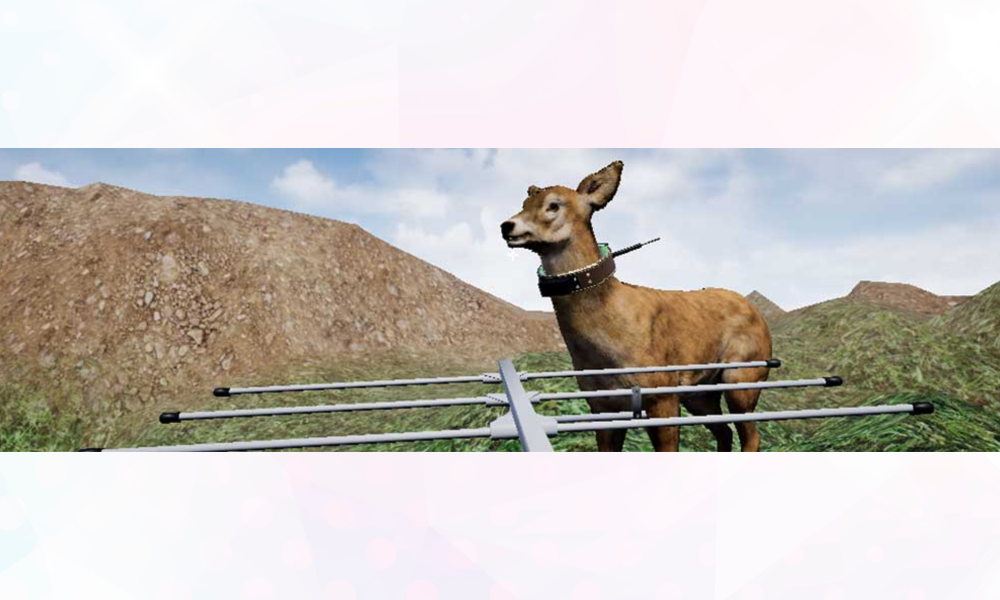
In this post, Brian Mather and Neil Anderson discuss their innovative pedagogical tool of using gaming technology to teach veterinary studies, one of the first programmes in the world to do so. This post is part of September-October’s Learning & Teaching Enhancement theme: Innovation in Science Teaching.
Introduction
In this article we describe an opportunity to use innovative games technology in teaching, which arose from our unexpected pivot to online due to the Covid-19 pandemic. Video game and movie industry technology, such as 3D digital modelling and animation, virtual production, and digital environments, brings practical experiences to online courses by allowing students to interact in complex ways with simulated ‘reality’. This adds an important dimension to online learning (which is often dominated by theory rather than hands-on learning). Gaming technology has multiple applications in subjects where students need to master complex practical skills, such as clinical procedures, animal handling in veterinary interventions, learning to safely use dangerous and expensive equipment, and many more. In vet medicine, simulation improves welfare by reducing stress on live animals. Gaming technology also has wider benefits for students, providing a way to make field trips more equitable and accessible. Edinburgh is one of the only universities in the world to use gaming technology in its veterinary education, and the potential for leading development across research and teaching is only beginning.
The MVetSci in Conservation Medicine
Conservation Medicine has been taught online to vets with an interest in conservation and wildlife health since 2012. It allows students to develop their expertise through real world situations and assignments. One of the most popular examples of this is on the course in Interventions in Wild Animal Health, a practical field course, part of the Wildlife Health Bridge (https://iwah.org/wildlife-health-bridge/), which is usually delivered at the Sariska Tiger Reserve in Rajasthan, India.
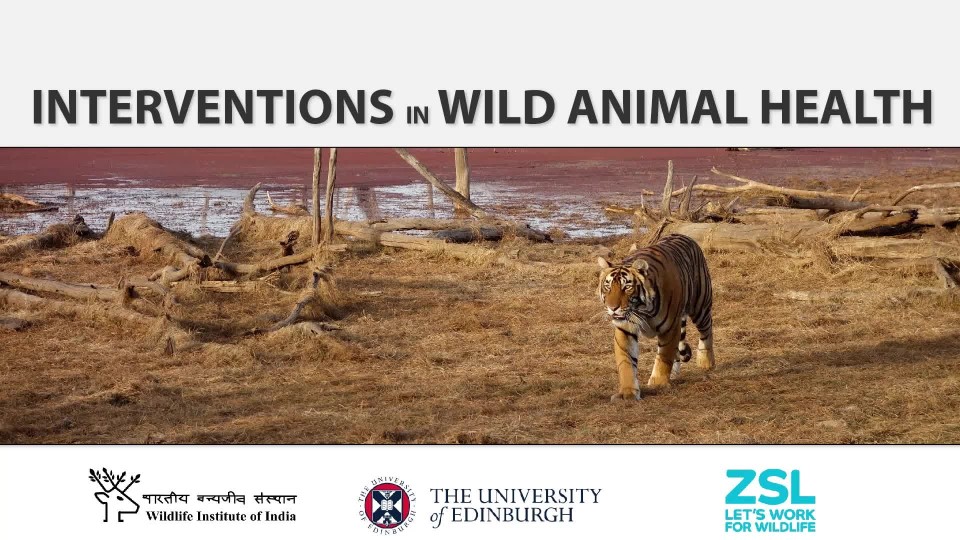
- Link to L&T Conference Video https://media.ed.ac.uk/media/1_vfy8iaku/
- Link to IWAH Promotional Video https://media.ed.ac.uk/media/1_2d85i8tv
During the residential course students carry out a variety of practical and theoretical work and they are given as many chances as possible for a hands-on learning experience. Tuition is carried out in the field to develop practical skills in population ecology (such as camera trapping, transect surveys), wildlife disease investigation (outbreak investigation, pathological investigation, disease risk analysis) and best practice capture and restraint techniques (including hands-on anaesthesia of free-ranging wildlife). However, due to the Covid-19 pandemic we were unable to offer any field teaching from January 2021.
Creating a Virtual Sariska
We were fortunate to have an excellent digital record of previous courses, allowing us to utilise video and photographic resources to simulate locations and situations specific to Sariska in our interactive activities. This provided the ‘look and feel’ of a real Sariska reserve.
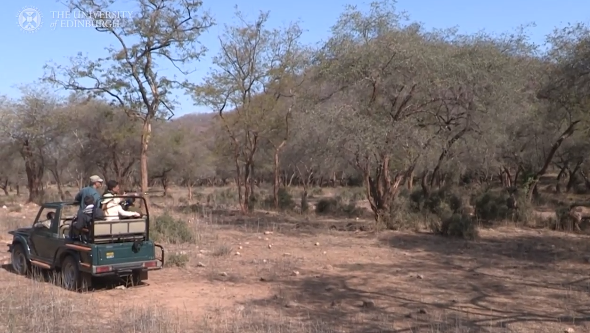
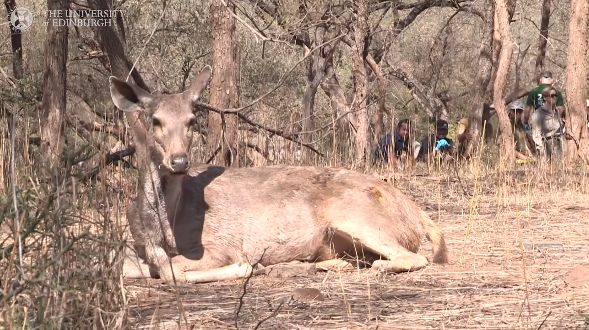
- Link to Field Anaesthesia and Monitoring video: https://media.ed.ac.uk/media/1_6adeopwt
Developing digital models to supplement the lecture content allowed the students to investigate and manipulate the practical field tools (such as camera traps and leg holds) that they would have otherwise had only brief exposure to in the live sessions. This included completely new technologies but also equipment familiar to them, from their time in practice, used in unfamiliar situations. With detailed annotations, animations, and audio accompaniment a rich series of resources have been created and will be used for an audience beyond our students.
Examples:

- Camera Trap https://qrs.ly/7kcn507
- GPS Locator https://qrs.ly/7ycn500
- Compass https://qrs.ly/h6cn506
- Leg Hold Trap https://qrs.ly/lpcn50a
We developed an interactive simulation to complement and enhance the training in population monitoring with a focus on understanding how to use radio telemetry to study animal home range/movement and to decipher the strength of a radio collar signal through nuances in signal output.
A second simulation provides a controlled environment to teach safe immobilisation technique of free-living wild animals through chemical means, which is an essential tool for wildlife health professionals. This is a risk-free scenario to evaluate the darting procedure and to visualise the implications of an anaesthetic procedure in the field, supplementing the theory on safe, ethical, humane and professional methods.
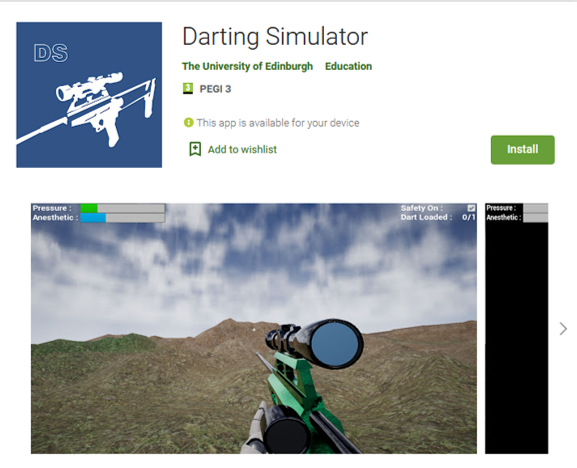
- Darting Simulator App https://qrs.ly/xwcmrp0

- Radio Telemetry App https://qrs.ly/uvcmrp3
Student Feedback
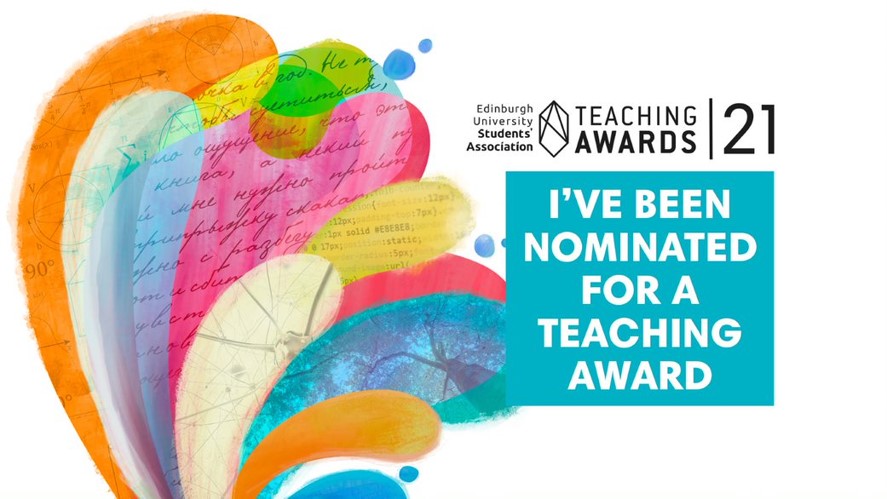
Although there was disappointment about not being able to attend in person, our students appreciated the efforts to which we went, and were kind enough to put forward several nominations to EUSA teaching awards. Their participation in the testing stage of these developments (using grounded theory in our research with students) allowed us to improve the experience for those who will follow.
Future
Demonstrating the use of virtual simulation in this way has broadened our horizons and opened the way to teaching practices deemed ‘impossible’ for remote teaching. We are not suggesting our simulation replaces future field courses, but this necessary experiment has allowed us to innovate in our teaching. We could, for example, resume the field course but keep the online simulation as a way for students to practice skills before and after.
Maintaining pedagogical principals whilst pushing the boundaries within gaming technology has resulted in a robust educational tool which incorporates; first principals, experimentation with the room to fail, progression with real time feedback and structured, motivational goals to encourage that progression.
We are currently underway with an even more ambitious project which includes ‘in simulation’ character communication, complex problem solving, and task fulfilment linked with “in-class” activities and assignments. However, it is essential to invest in time and skills development to enable further innovative teaching and to develop collaborations.
- Watch the authors’ Learning & Teaching Conference poster and video here: POSTER: Gaming COVID-19: Using a pandemic as an opportunity – Learning and Teaching Conference 2021 (ed.ac.uk)
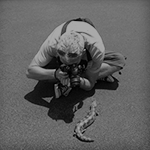 Brian Mather
Brian Mather
Brian is a Senior e-Learning Developer in the Digital Education Unit at the Royal (Dick) School of Veterinary Medicine, where he is responsible for e-learning development and guidance for online postgraduate programmes. He has worked in digital education since 2009 and with the University of Edinburgh since 2013.
Prior to his move into education, Brian trained as an industrial designer working in exhibition, furniture, graphic, and web design where he developed a unique blend of skills harnessed to create engaging and innovative learning materials for students.
His current areas of interest are video production for practical skills teaching, 3D digital modelling and animation for anatomy teaching, virtual reality simulation and digital environments for online students.
@BrianDEU
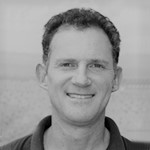 Neil Anderson
Neil Anderson
Neil is a senior lecturer at the Royal (Dick) School of Veterinary Studies where he is the Programme Director of the Conservation Medicine MVetSci and One Health MSc programmes. He qualified as a veterinarian in 1996 and gained extensive experience in first-opinion clinical practice before gaining a PhD in wildlife epidemiology. He then took up a new role to help with the development of the Conservation Medicine and One Health MSc Programmes.
His research interests include wildlife disease epidemiology, conservation and disease transmission across the wildlife/livestock/human interface. His current projects are focussed on trypanosomiasis, One Health, and the health of wild raptor populations. He also provides veterinary and scientific support for conservation projects including the South of Scotland Golden Eagle Project for which he is Chair of the Scientific Advisory Panel. Neil strongly believes that vets can play a key role in conservation and that provision of postgraduate training is a critical part of achieving this potential.
@DrNeilEAnderson
@ConservationMed

